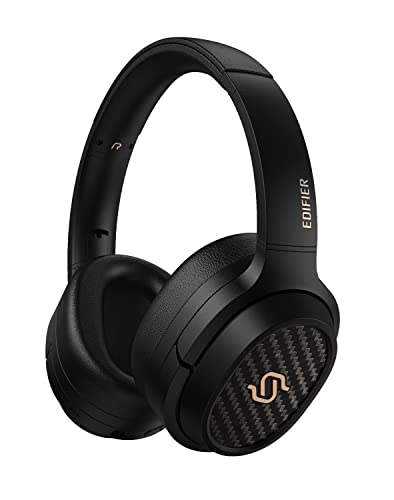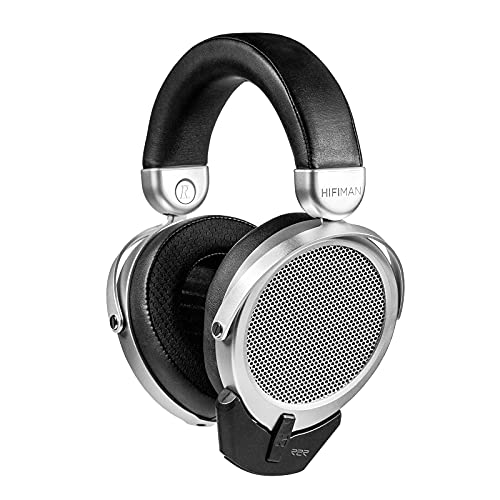Unexpected Business Strategies For Business That Aided How Do Planar M…
페이지 정보
작성자 Senaida 댓글 0건 조회 18회 작성일 24-04-12 11:38본문
 How Do Planar Magnetic Headphones Work?
How Do Planar Magnetic Headphones Work?Planar magnetic headphones are less dispersed than dynamic drivers. This is because it vibrates the entire diaphragm, not only the portion that connects to the voice coil.
 They also have a larger soundstage, and better separation and differentiation capabilities. They leak more, and require isolation to avoid the sound from affecting those around you.
They also have a larger soundstage, and better separation and differentiation capabilities. They leak more, and require isolation to avoid the sound from affecting those around you.The diaphragm
The diaphragm plays a crucial function in nearly all transducers of sound (headphones and loudspeakers, as well as microphones) that are used to move air in order to produce sound. In headphones it's a flat piece of diaphragm, suspended between two magnets that produce an electromagnetic field when activated by audio signals. In planar magnetic headphones, the electric current from the headphone's source reaches the diaphragm by way of a coil that generates an electric force that causes it to vibrate.
The sound produced is transmitted to your ear through the diaphragm's suspension. It is often made of an artificial material such as titanium or neodymium. The diaphragm can then resonate with your ear using various frequencies. Planar magnetic headphones are able to provide high SPLs, but without sounding distortion-free.
In addition to being able to reproduce high SPLs as well, planar magnetic headphones provide a more immersive soundstage. The reason is that the flat diaphragm creates the sound wavefront in a planar manner, instead of the focused spherical wavefronts that are found in the majority of dynamic drivers. The headphones create a more natural soundstage that what is a planar headphone easier to localize.
Transient response is a further benefit of planar magnet headphones. This is the ability of planar magnetic headphones to reproduce short-lived peaks such as cymbal hits and kick drum hits. The diaphragm's size and the fact that it is able to move evenly across its surface ensures that there's no distortion at these peak frequencies.
However, the planar magnetic headphones do have some drawbacks that must be considered when deciding on the best set. One of the main reasons for their higher price is that they are typically much larger than their counterparts with dynamic features. This is mainly due to the design of their motors, which can be quite complex, as well as the pedigree of the company behind them.
Fortunately, there are some great affordable planar earphones magnetic headphones that you can purchase for less than $100. In addition to their exceptional quality, these headphones are available in closed-back and open-back styles and you can pick which one fits your listening habits best. The HIFIMAN Arya Stealth Magnets Edition and Audeze LCD-2 Classics are some of the top options available.
The voice coil
Planar magnetic headphones are known for their accuracy and precision providing amazing clarity and detail across the entire frequency range. This is due to the thin, flat diaphragm that is sandwiched between the arrays of magnets. When an electrical signal is sent through your audio source, the conductive material windings in the voice coil react with the magnetic field, causing the diaphragm's surface to vibrate creating sound waves.
The advantage of the planar-type driver is that every vibration occurs evenly and at the same rate regardless of where the diaphragm is located within the magnetic field. This results in a more consistent sound quality with less distortion and a more uniform wavefront that is more comfortable for ears. Dynamic drivers on the other hand, tend to produce sound waves that are less uniform and more circular.
Because of the way they operate, planar magnetic drivers require a stronger amplification system than their dynamic counterparts. They are also larger and heavier due to their larger flexible membrane. They require an external amplifier or DAC to drive them.
Additionally that, magnetic drivers that planar are more expensive than their dynamic counterparts due to the fact that they're usually made of high-end materials. In recent years, however some HiFi audio headphone manufacturers have revived this old technology. Consequently, we're seeing a number of amazing new headphones with planar magnetic drivers, which provide an amazing listening experience.
Like everything else in life, the decision between planar magnetic and dynamic headphones comes down to your personal preferences and budget. Planar magnetic headphones are renowned for their clarity and accuracy, and have a slightly larger soundstage than dynamic models. However, they are typically more expensive and many listeners prefer the powerful bass and warm sound of dynamic headphones.
Dynamic driver headphones tend to have more power and slam. However, this isn't always noticeable by most listeners. They also have better ability to perceive structure and How Do Planar Magnetic Headphones Work distinguishing. Nevertheless, How Do Planar Magnetic Headphones Work there are plenty of exceptions to this rule, and some great magnetic headphones are available at a price that is very affordable.
Magnets
In a headphone with dynamic driver, electrical signals from your source of audio travel through a coil composed of conductive materials that interact with magnetic fields within the driver. They are then used to manipulate the flat diaphragm and create sound waves. Planar magnetic headphones are made up of a thin layer of conductor material that is sandwiched between powerful magnets. They are more difficult to make and that's why they're more expensive.
They also tend to be bigger and heavier because of their design which means they require more space around the drivers. They also consume more power than their dynamic counterparts and will require an amp specifically designed for headphone use to achieve their full potential. Although this isn't always a issue, it's something you should be aware of when looking at these headphones.
It's not true for all headphones, but a lot of the top planar magnet headphones have a more open, airy sound. This gives them the impression of space, which is quite appealing to some listeners. The soundstage they provide is also a bit larger and can be useful when listening to music in a group.
The open-back design is a common choice for many designer headphone brands, including the likes of HiFiMAN and Audeze. Although they're not as well-known as closed-back models, they're an excellent opportunity to experience the benefits of planar magnetic technology. For instance the HiFiMAN Sundara offers a great introduction to the speed, precision, and detail of these headphones at a reasonable cost.
The housing
If you're an audiophile, or simply someone who loves good music, it's likely you've heard of planar magnetic headphones. They sport a distinct look with a flat diaphragm embedded that can be found in both open-back and over-ear headphones. These headphones are not just unique in design but also work using a different mechanism than dynamic drivers.
In contrast to the traditional moving coil driver that uses the voice coil to create sound waves Planar magnetic headphones employ an array of magnets that move the diaphragm back and forth to generate sound. These arrays can be positioned on either one or both sides based on the design. The magnets are activated when an electrical signal travels through the voice coil and causes it to vibrate. The vibrations create magnetic fields that interact with magnets on either side of the diaphragm. The interactions cause the diaphragms push and pull against the magnetic fields. The audio signal is represented by sound waves.
Due to this, the sound of headphones with planar magnetic design is typically more resonant and offer better bass extension capabilities. The large, flat diaphragm responds faster to changes in input signals, so they respond quicker to bass response and are less susceptible to distortion. This gives them an improved, precise audio quality that some audiophiles find appealing.
These headphones are capable of reproducing higher frequencies, but do not have the punch and slam that modern dynamic driver headphones can provide. Therefore, they may be a bit difficult to listen to for people who want to use them to listen to hard rock or metal music.
Planar magnetic headphones are costly because of their unique design. They also require a separate amplifier and digital audio converters to provide power to the drivers. This can add up to a significant cost increase for some consumers, but many people think the sound is worth the cost. There are other kinds of headphones for those who do not wish to spend too much.
댓글목록
등록된 댓글이 없습니다.

